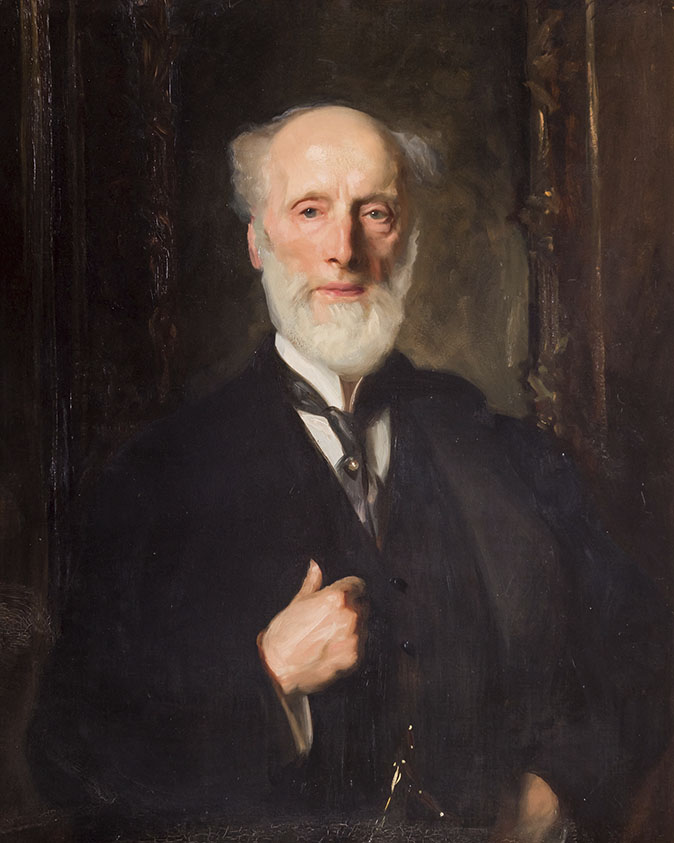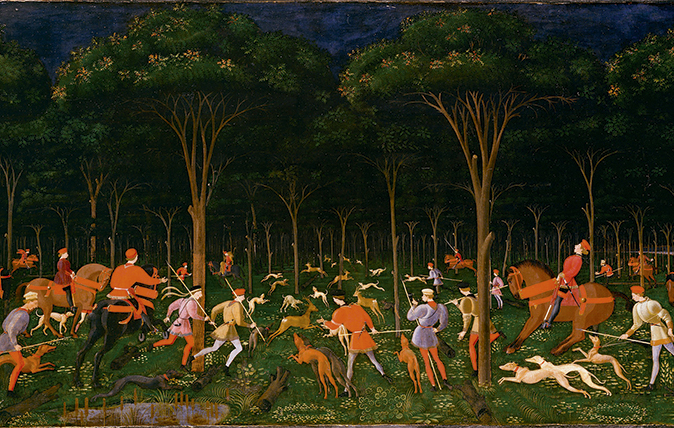My favourite painting: The Lord Crathorne
'I love and am inspired by this powerful portrait of my remarkable grandfather'



Sir Charles Tennant Bt, 1901, by John Singer Sargent (1856–1925), 34in by 27in, James Crathorne
The Lord Crathorne says: I love and am inspired by this powerful portrait of my remarkable grandfather. He was a famous Victorian entrepreneur, collector and father of several spirited children. This portrait has been an important part of my life since it was given to me by my aunt, K. Elliot, in the early 1950s (she was Sir Charles’s 15th child). Charles commissioned the portrait as a gift for his second wife, Marguerite. It was a very happy marriage in spite of her being 45 years his junior. She bore him four daughters; the youngest was my mother Nancy, born when he was 81 .
Lord Crathorne KCVO was Lord-Lieutenant of North Yorkshire for 15 years. He sits in the House of Lords and is co-chairman of the All Party Parliamentary Arts & Heritage Group
John McEwen comments on Sir Charles Tennant Bt: In January 1901, Queen Victoria died. Victorian exhibitions had been dominated by story pictures with a moral or inspiring message, but the great names of Victorian art – Millais, Burne-Jones, Leighton, Watts – had no successors. Portraiture was the vogue under Edward VII, dominating such events as the Royal Academy’s Summer Exhibition. Its status rose with the popularity of old portraits among American as well as British collectors. Prices for works by Reynolds, Gainsborough, Raeburn and Lawrence soared, along with those for Old Masters.
It was appropriate that the cosmopolitan American Sargent, Paris-trained and London-based, should be pre-eminent: the first choice of old money upholding noble lineage, and upwardly mobile new money. Sargent’s full Edwardian flowering – ‘le Van Dyck de l’epoque’ (Rodin) – coincided with the enlargement – ‘fort luxeusement’ (Monet) – of his studio in Tite Street, Chelsea. His annual income in 1901 was approximately £15,000 (£1 in 1901 equalled £130 today).
Sir Charles Tennant (1823–1906) was the eldest grandson of Charles Tennant (1768–1838), initially an Ayshire silk weaver, immortalised by Robert Burns as ‘wabster Charlie’. The grandfather’s money spinner was bleach powder, which replaced human urine, for which he received the patent. At his death, he owned the largest chemical business in the world, one of the components of the future ICI.
Sir Charles – connoisseur, businessman, Liberal MP – established a country seat, The Glen in Peebleshire, and gained a permanent entry in Debrett’s as 1st Baronet. His daughter Margot (1864–1945) was the second wife of Prime Minister Asquith. A younger daughter, the Conservative Politician Baroness (‘K’) Elliot of Harwood (1903–94), could say in the 1990s that her grandfather danced the night away at the 1815 Waterloo Ball.
Exquisite houses, the beauty of Nature, and how to get the most from your life, straight to your inbox.

My favourite painting: Lord Hindlip
'I’m lucky to have gazed on this picture often. I could live with it and never tire of it.'

My favourite painting: Baroness Trumpington
Baroness Trumpington chooses her favourite painting for Country Life.

Credit: © Ashmolean Museum
My favourite painting: Lord Dalmeny
'There is no religious dogma, just entrancing charm, whimsy and Pony Club heroics on display under the dark Narnian canopy'
Country Life is unlike any other magazine: the only glossy weekly on the newsstand and the only magazine that has been guest-edited by His Majesty The King not once, but twice. It is a celebration of modern rural life and all its diverse joys and pleasures — that was first published in Queen Victoria's Diamond Jubilee year. Our eclectic mixture of witty and informative content — from the most up-to-date property news and commentary and a coveted glimpse inside some of the UK's best houses and gardens, to gardening, the arts and interior design, written by experts in their field — still cannot be found in print or online, anywhere else.
